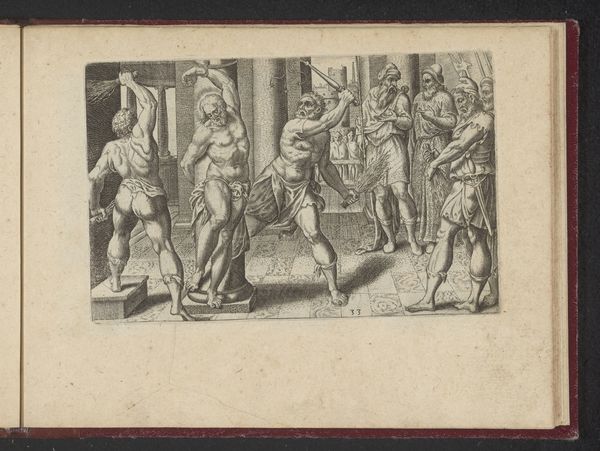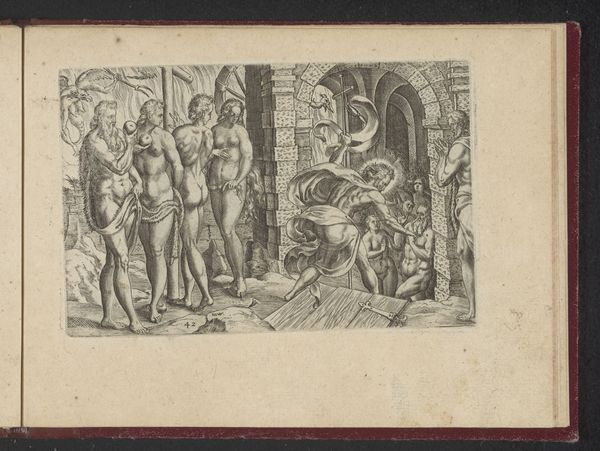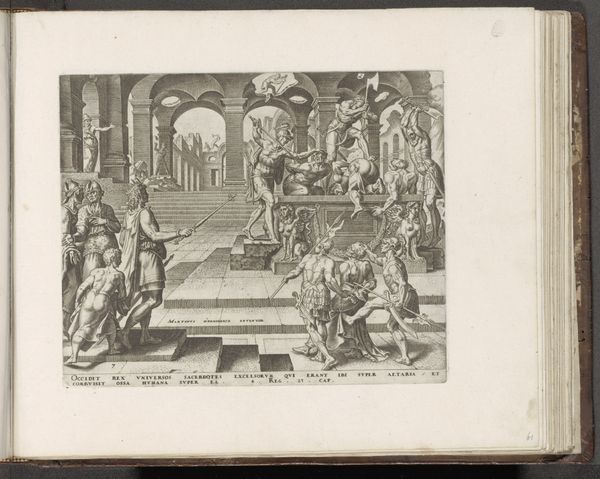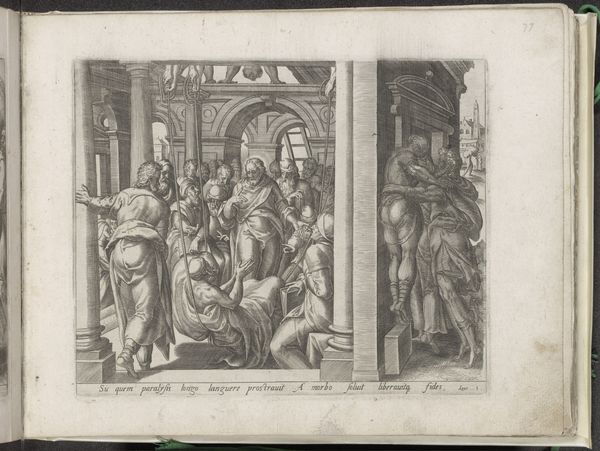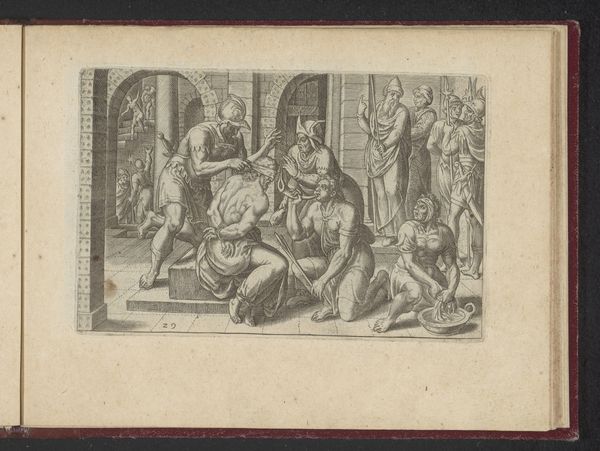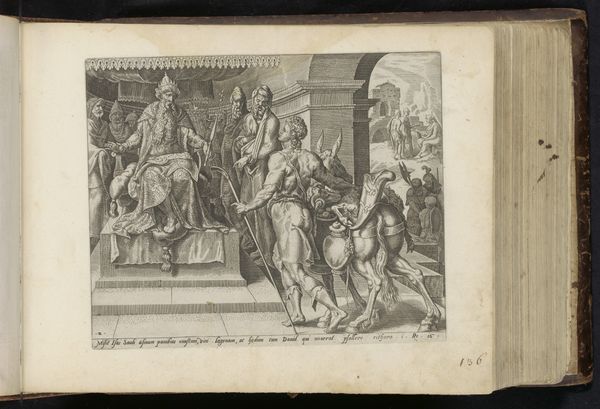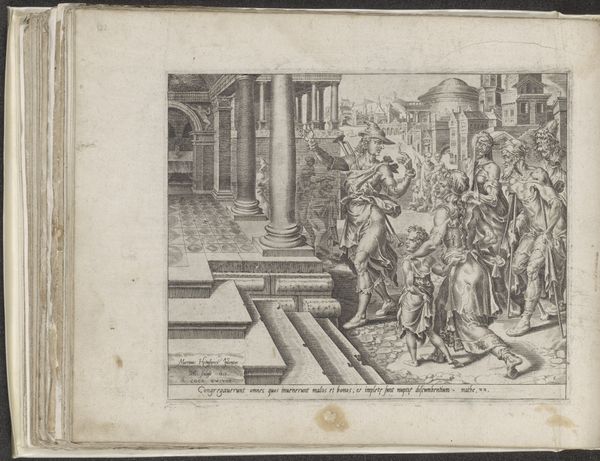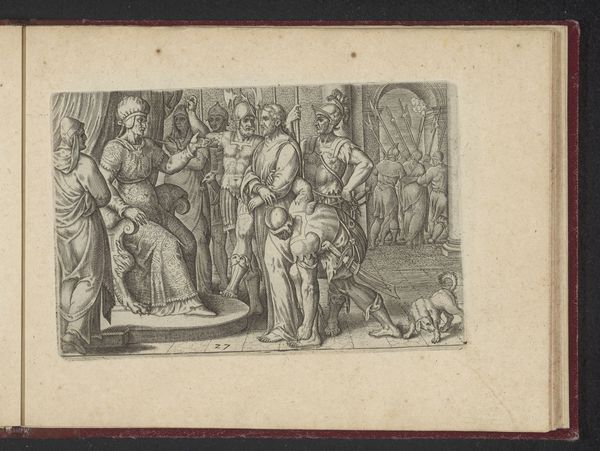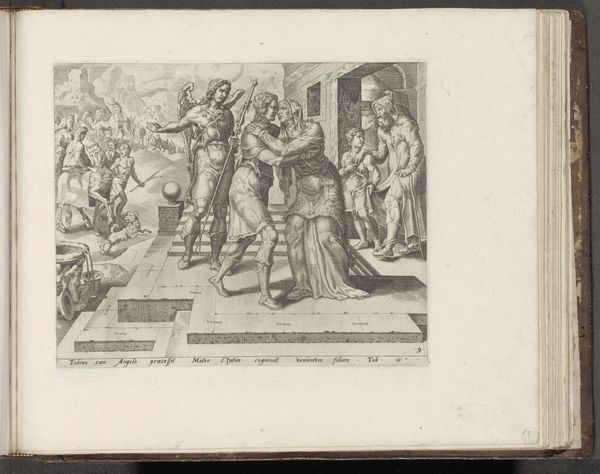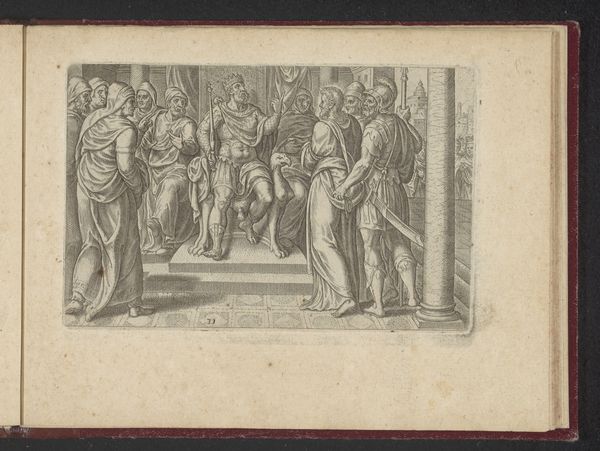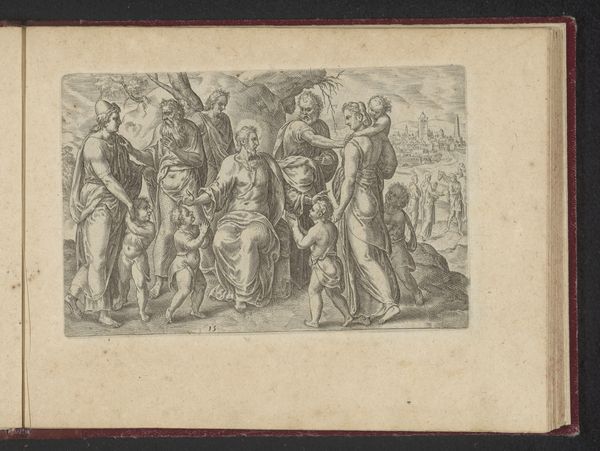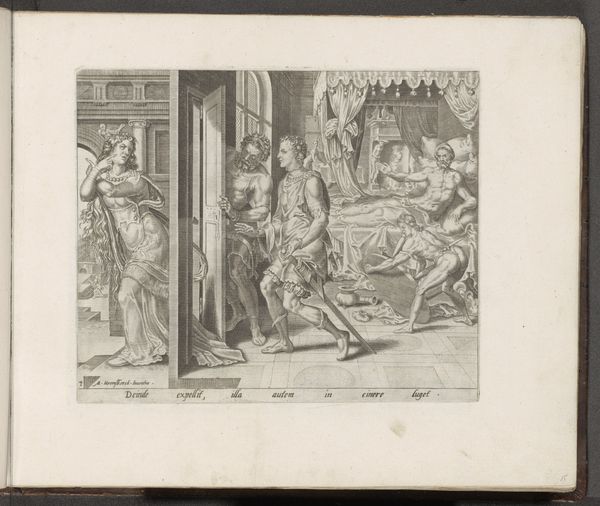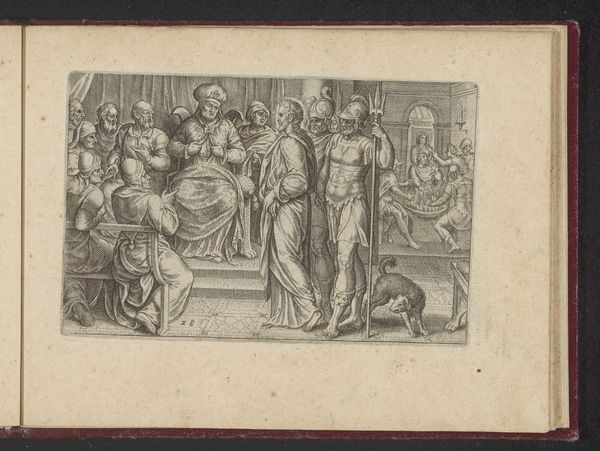
print, engraving
# print
#
mannerism
#
figuration
#
coloured pencil
#
line
#
history-painting
#
engraving
Dimensions: height 92 mm, width 139 mm, height 137 mm, width 183 mm
Copyright: Rijks Museum: Open Domain
Curator: This is Philips Galle’s 1573 engraving, "Pilate Lets the People Choose Between Christ and Barabbas," held here at the Rijksmuseum. It depicts a pivotal biblical moment. Editor: My first impression is one of rigid structure; the architectural setting really compartmentalizes the chaotic drama unfolding within. It feels stagey, theatrical, even. Curator: Galle was working in the Mannerist style, and that emphasis on artifice, the elongated figures and staged drama, certainly echoes through this print. Observe how Pilate sits enthroned, elevated above the crowd both physically and metaphorically. He embodies earthly power while Christ, subtly placed, is meek. Editor: The contrast in rendering is stark. Pilate and his cohort are depicted with this hard, chiseled linearity while Christ almost fades into the background. Galle employs line so consciously here. Look at the detail given to the soldiers' armor, contrasted with the subtle shading suggesting Christ’s aura of quiet humility. Curator: Exactly. That contrast is important. This engraving carries enormous cultural weight. Think of the long history of using this biblical scene to justify antisemitism; Galle subtly places Barabbas in shadow and renders the crowd’s faces as almost grotesque, encouraging viewers to interpret them as villainous. The architecture lends credence, perhaps subconsciously, aligning Pilate and his decisions with established imperial power. Editor: I'd say the building serves more to create separate, contained spaces that help isolate specific symbolic groupings within the picture's larger composition. By trapping figures behind architecture, the perspective and organization reinforce the symbolic narrative. But to my eye, this compartmentalization almost tips into self-parody. It’s like Galle doesn’t quite trust the scene’s innate drama. Curator: The cultural memory surrounding this moment is undeniably complex and weighty, shaped profoundly by art like this. Editor: Indeed, Galle’s compositional choices are deeply entwined with both his and our interpretations, revealing how technique and context become inseparable. The picture demands active seeing and decoding.
Comments
No comments
Be the first to comment and join the conversation on the ultimate creative platform.
